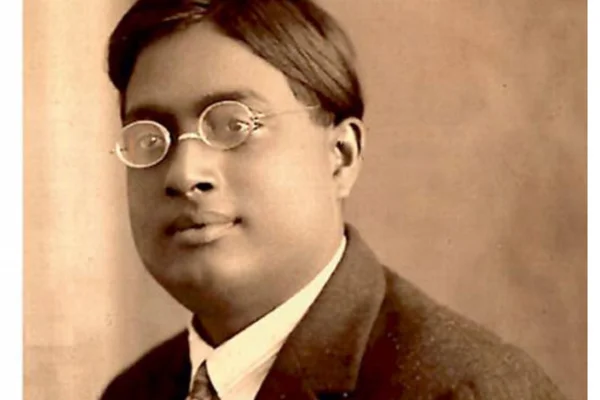On the 50th death anniversary, Satyendra Nath Bose, renowned for his pioneering contributions to theoretical physics, was commemorated globally.
About Satyendra Nath Bose:
- Satyendra Nath Bose was an Indian physicist renowned for his significant contributions to theoretical physics.
- His work laid the foundation for Bose-Einstein statistics and the theory of the Bose-Einstein condensate.
Early life:
- He was born on January 1, 1894, in Calcutta (now Kolkata), British India.
- He studied at the Hindu School and later at Presidency College in Calcutta.
- Bose completed his B.Sc. in mixed mathematics in 1913 and M.Sc. in 1915 from Presidency College.
Contributions in the field of Science:
Bose-Einstein Statistics:
- Bose collaborated with Albert Einstein to develop Bose-Einstein statistics, a statistical distribution that describes the behavior of indistinguishable particles with integer spin (later named bosons).
- This collaboration led to the Bose-Einstein condensate.
- This work, published in 1924, provided a theoretical foundation for understanding the behavior of particles in quantum mechanics.
Bose-Einstein Condensate (fifth state of matter):
- Bose’s collaboration with Einstein also led to the prediction of a unique state of matter known as the Bose-Einstein condensate (BEC).
- A Bose-Einstein Condensate is formed at temperatures close to absolute zero (almost absolute zero or around –273.15 degrees Celsius), where classical thermal motion of particles is extremely low.
- At such low temperatures, particles, typically atoms, lose their individual identities and behave as a single quantum entity.
- This behavior is a consequence of quantum degeneracy, where a large number of particles occupy the same quantum state.
- In this state, a group of particles, typically bosons, occupies the same quantum state, forming a single quantum entity with remarkable properties like superfluidity and macroscopic quantumcoherence.
- Examples include alkali metal atoms like rubidium and sodium.
Quantum Mechanics:
- Bose’s work laid the groundwork for the development of quantum mechanics and contributed to the understanding of the statistical behavior of particles at the atomic and subatomic levels.
Planck’s Law of Black-Body Radiation:
- Bose made early contributions to the field of theoretical physics by developing an equation that formed the basis for Planck’s law of black-body radiation.
- Black-body radiation is the thermal electromagnetic radiation emitted by a black body.
- This work was presented at the 1924 meeting of the British Association in Toronto, and it demonstrated Bose’s early prowess in the field.
- Bose’s work, titled “Planck’s Law and Light Quantum Hypothesis,” was translated into German by Einstein and published in Zeitschrift für Physik.
Theory of Radiation and the Ultraviolet Catastrophe:
- Bose worked on problems related to the theory of radiation and provided an alternative derivation of Planck’s law, addressing issues such as the ultraviolet catastrophe.
Nuclear Physics:
- Bose made contributions to nuclear physics, particularly in the areas of X-ray crystallography and the interaction of radiation with matter.
Institutional Contributions:
- Bose played a pivotal role in shaping scientific education and research in India.
- Alongside Meghnad Saha, he contributed to establishing modern theoretical physics in the country.
Honours:
- Rabindranath Tagore dedicated his only book on science, Visva–Parichay, to Satyendra Nath Bose.
- Bose was honoured with the title Padma Vibhushan by the Indian Government in 1954.
- Bose was knighted in 1954 but later renounced his knighthood in protest against colonial policies.
- In 1959, he became the National Professor, the highest scholarly honor in the country, holding the position for 15 years.
- In 1986, the S.N. Bose National Centre for Basic Sciences was established in Salt Lake, Calcutta, by an act of Parliament.
- The class of particles that obey Bose statistics, bosons, was named after Bose by Paul Dirac.
Ref: Source
| UPSC IAS Preparation Resources | |
| Current Affairs Analysis | Topperspedia |
| GS Shots | Simply Explained |
| Daily Flash Cards | Daily Quiz |



